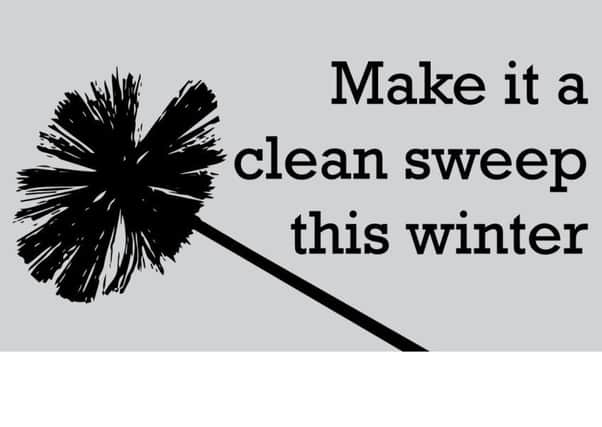Get your chimney swept before lighting the fire for the first time this autumn


However, lighting an unswept chimney could lead to a serious fire - in the last three years there have been 168 chimney fires in Beds.
These type of fires usually occur because not all the fuel is burnt during combustion and leaves combustible particles in the chimney that can be ignited by the high temperatures or flames from a very hot fireplace.
Advertisement
Hide AdAdvertisement
Hide AdThis can cause the chimney to weaken and ignite other parts of the house with potentially devastating consequences.
To prevent this happening:
>Ensure your chimney is swept regularly by a professional chimney sweep.
>Between sweeps keep chimneys, flues and appliances clean and well maintained.
>Always use a fire guard to protect against flying sparks from hot embers.
Advertisement
Hide AdAdvertisement
Hide Ad>Store fuel away from the appliance so sparks do not set it alight.
>Ensure the fire is completely out before going to bed or leaving the house.
>Ensure good quality and appropriate fuel is used.
>Avoid blocking air vents or air bricks or interrupting the air supply.
Beds Fire and Rescue Service prevention support manager Thomas Warner said: “Keeping your chimney clean and free of debris helps prevent any build-up of combustible deposits that could catch fire. During the summer, when chimneys aren’t used much, they can also become home to birds’ nests, cobwebs or other material that helps a chimney fire start. Birds’ nests and other debris can also block the flue which means smoke and deadly carbon monoxide gas, released during burning, can seep back into the house poisoning the occupants.
Advertisement
Hide AdAdvertisement
Hide Ad“We recommend that you have a working carbon monoxide Detector in any room with solid fuel appliance. Under new laws which are due to come into effect from
October 2015 Landlords are required to fit carbon monoxide alarms in rooms containing solid fuel appliances.
“Home insurance policies often state you should take reasonable care of your chimney and for thatched properties could specify how often your chimney is swept. Ignoring this could mean you are uninsured if your chimney catches fire, so check your policy and have your chimney swept.
“Even chimneys that have been lined still require regular sweeping and if you have ‘slumber’ mode (when an appliance is purposely set at a low or minimum output) on an appliance please avoid using this as much as possible. Having your chimney swept also enables you to get advice from an expert about chimney safety. Why not remind your friends and family to get theirs swept as well.”
Advertisement
Hide AdAdvertisement
Hide AdHow often chimneys should be swept depends on the type of fuel used:
Smokeless fuels – at least once a year.
Bituminous coal – at least twice a year.
Wood – quarterly when in use.
Oil – once a year.
Gas – once a year (Any work on gas appliances requires a Gas Safe registered installer/engineer).
For further information on chimney safety, you can visit the association websites – www.nacs.org.uk or www.instituteofchimneysweeps.com.